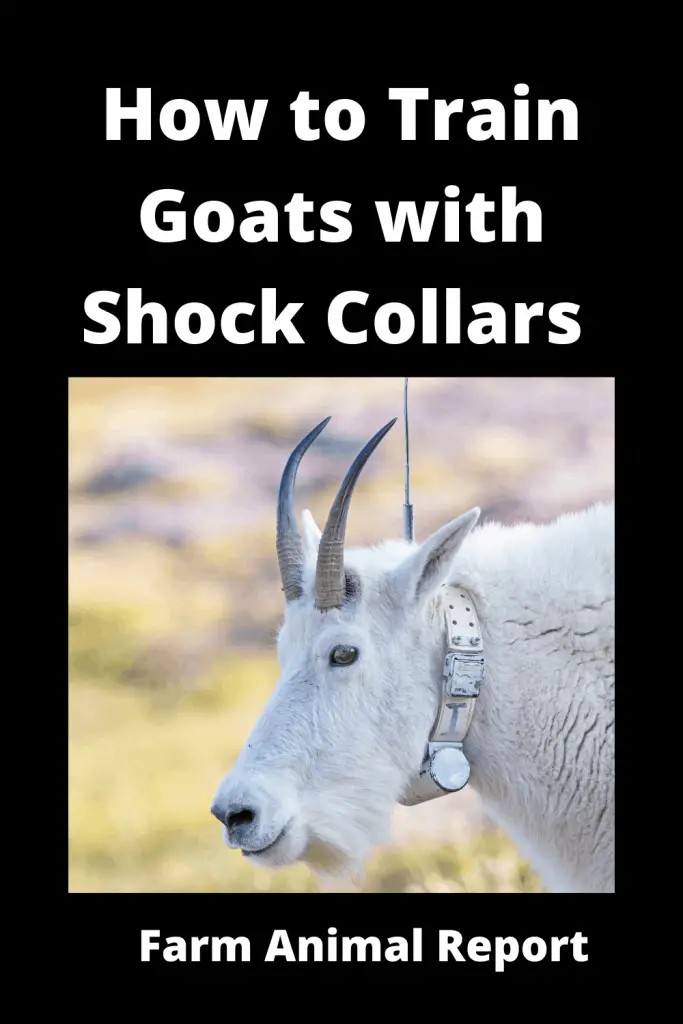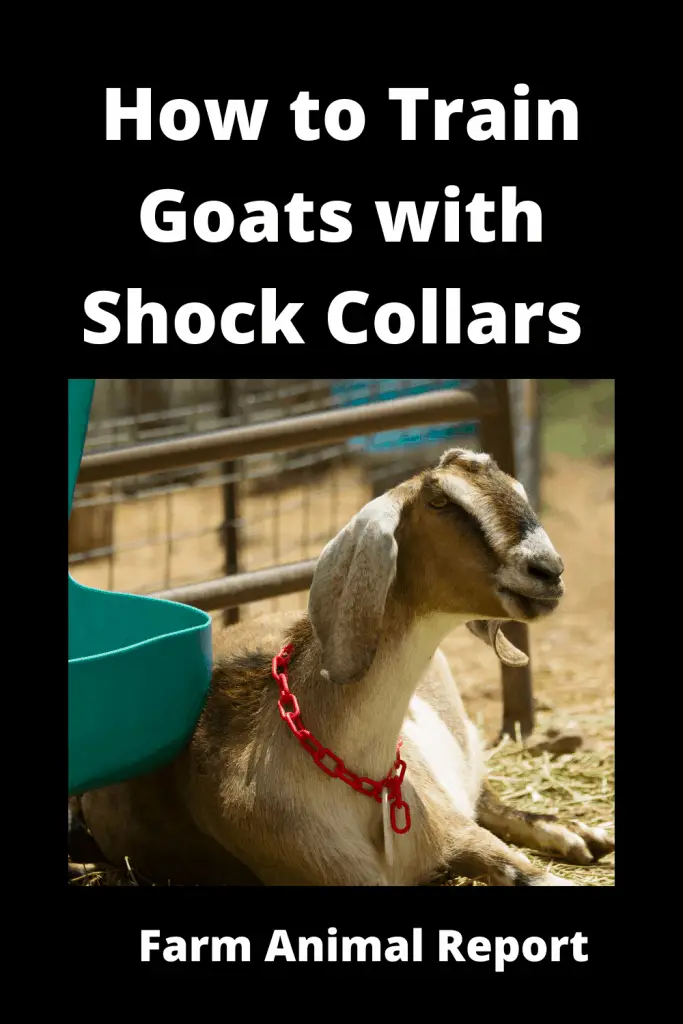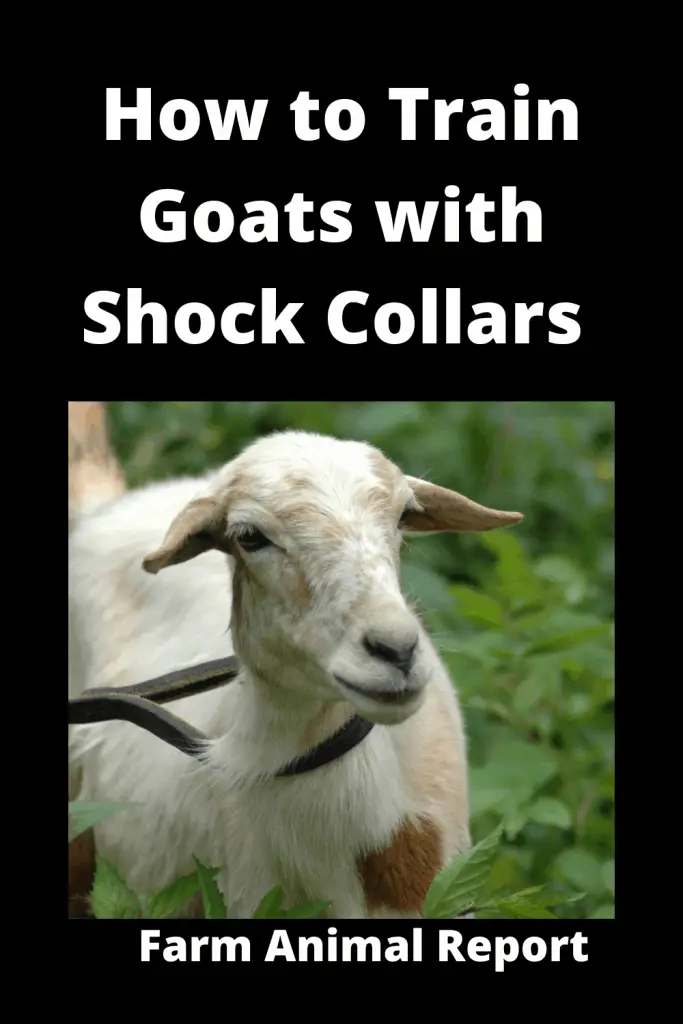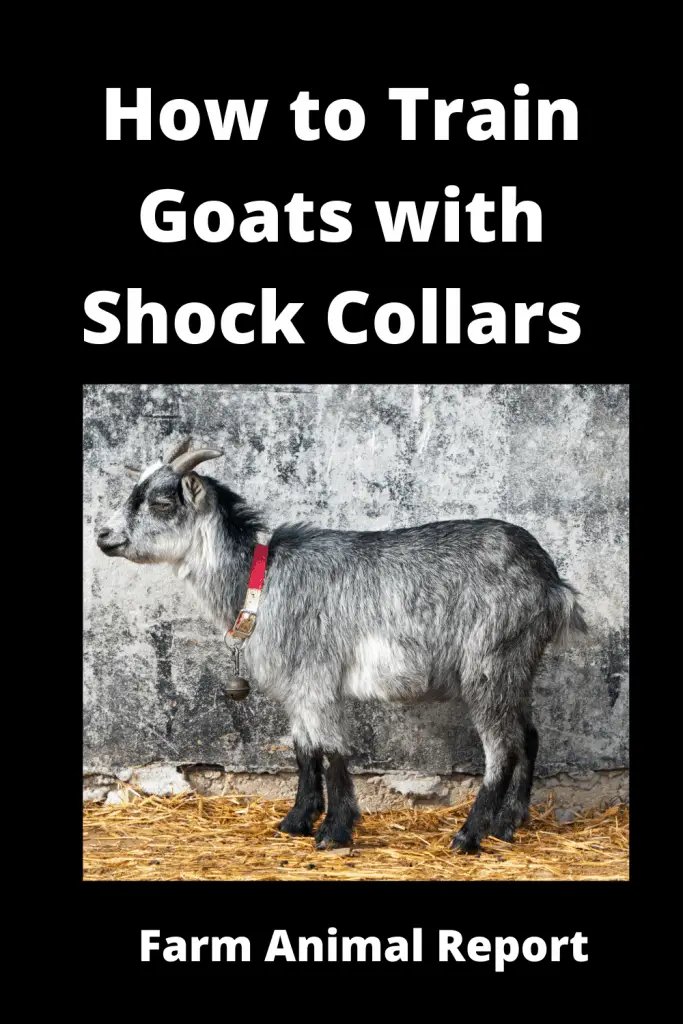Do Shock Collars Work on Goats
Goats are cute animals and are considered one of the earliest domesticated animals. They are not just cute but also somewhat comical and amazingly intelligent.
Goats are stout-bodied mammals with horns and cloven hooves. There are two types of goats: domestic goats (Capra hircus), which are raised and bred as farm animals; and mountain goats (Oreamnos americanus), which live in steep, rocky areas in the American Northwest.

Goats are members of the Bovidae family and area grazers. Do Shock Collars Work on Goats
Just like sheep, they are also ruminants( having complex stomachs) and also called small farm Ruminants.
Here we will look into some important points to train goats with shock collars.
What are Shock Collars
These are basically, specially designed collars that use electric current passing through metal contact points on the collar to give your animal a signal. This electric signal can range from a mild tickling sensation to a painful shock. They are sold as training devices to control the behavioral patterns of your animals.
See Our Guide – 8 Ways to Make Money from Goat Farming
How Can You Use Shock Collars on Goats
See Amazons Resources on the Science of Raising Goats
Goat keepers are always curious to know whether they can train their goats with shock collars as it is a general experience that shock collars are mostly used for dogs. In fact, this has been experimentally proven that shock collars can be effectively used in goats as well. There are many advantages of using these shock devices in goats.

What are the Different Purposes of Using Shock Collars on Goats
Shock collars are widely used to train goats to stay in a confined area/territory. By this, we can train them to remain in a defined fence boundary.
Another main purpose is to train your goats and control their behaviors with electrical stimulation through neck collars.
A research study was conducted to evaluate the control over the activity of goats, managed without a herder or caregiver. As goats are effectively used to control weeds and unnecessary bushes in the field because they are grazers. It was concluded that training goats with electric shock collars, proved efficient in restricting them into a confined grazing area.
This was also observed in the study that goats that were not wearing shock collars around their necks also followed the goats who were having collars. The reason was herd instinct and the ability of goats to follow the rest of the flock members.
The experiment was designed on six goats, which were allowed to wear electric shock collars. Goats were then kept in the training pen. After several times, the system was activated, it was clearly shown that goats moved randomly in response to the electric shock. The intensity of electric shock was kept minimum and safe that caused a momentary discomfort.

At the start of the training session, goats didn’t respond well to the shock but with the passage of time, they learned well to give feedback to these electrical signals. With few exceptions, it was also noticed that all the goats showed varying responses/behaviors to these collar training sessions. But again, the repetitive exposure was thought to be effective in training them well.
Finally, this was suggested that without installing any fences around the specifically designed area/locality, something like invisible fencing, can be replaced with electric shock collars. This is the best method of containing goats to a weed-infested area by using these potential electrical signals.
Is Collar Shock Safe For Goats
Shock collars are not intended as a punishment but more as a deterrent to negative or unsafe behavior.
The shock administered by an approved shock collar is safe, so while it is certainly enough to get your goat attention and deter certain behaviors, it won’t do any lasting physical harm.
So,it is recommended to use an approved shock collar while training your goat. Keep in mind that, nature of goats is quite different( stubborn) than other animals, and while training them with shock collars can be a long-term process, requiring more effort and patience. But yet, there are certain levels of success depending upon breed, temperament, health status, and other parameters of goats.

Disadvantages of Using Shock Collars
All along with a number of advantages while training goats with shock collars, there are a few disadvantages too.
Goats show varying levels of responses while getting trained with shock collars, sometimes, they even don’t respond.
According to some schools of thought, shock collars are not ethically good for goats, as electrical pulses especially of high voltage can cause discomfort in them.
Also if Your Batteries go dead in the animal’s collar. They cease to function. In our experience for a while the animals remember their training. Until they test the perimeters
It becomes hard to manage the safety of goats, if no fences and they are working opening with shock collars, predators may attack them.
Final Thoughts – Conclusion
Goats are not just animals, they are cleaner as well. They are widely used to clean weeds from lands and using shock collars in them can be a good strategy for training them to stay in their defined area. With shock collars. You can also control the behavior of your goat. But this is a sensitive process that takes time and lots of training.
Remember, to use only safe shock collars which give a safe range of voltage to stimulate or control your goats.
Taking veterinary consultancy is also so important while training your goats with shock collars, as a veterinary expert can guide you better in this regard.
References
Holmst, P.J., 1980. The use of goats in grazing systems and their place in weed control. Proc. Aust. Soc. Anim. Prod., 13: 188-191.
Lacey, C.A., Fay, P.K., Lym, R.G., Messersmith, C.G., Maxwell, B. and Alley, H.P., 1985. Leafy spurge: distribution, biology, and control. Circular No. 309, February. Coop. Ext. Serv., Montana State University, Bozeman, MT, 14 pp.
Gray, T., 1984. Goats curb weed problem. N. Z. Farmer, 105: 13-14
Green, L.R., Huckes, C.L. and Graves, W.L., 1979. Goat control of brush regrowth on southern California fuelbreaks. Rangelands, 1: 117-119.
Urness, P.J. and Jensen, C.H., 1983. Goat use in fall increases bitterbrush browse and reduces 171 sagebrush density. In: USDA Forest Service Gen. Tech. Rep. INT, Intermountain Forest and Range Exp. Stn., August, pp. 186-194.
KEY WORDS (GOAT COLLAR) (GOAT TRAINING) ( WEED CLEANING) (SHOCK COLLAR) (INVISIBLE FENCING)
Goat Breeder Associations
| Goat Association | Location | Link |
|---|---|---|
| American Goat Breeders Association | United States | AGF |
| English Goat Breeders Association | UK | EGBA |
| Canadian Meat Goat Association | Canada | CMG |
| Minature Goat Breeders Association | Australia | MGBA |
| Boer Goats | South Africa | BGSA |
| American Boer Goat Association | United States | ABGA |
| World Goat Breeders Associations | List | WGBA |


